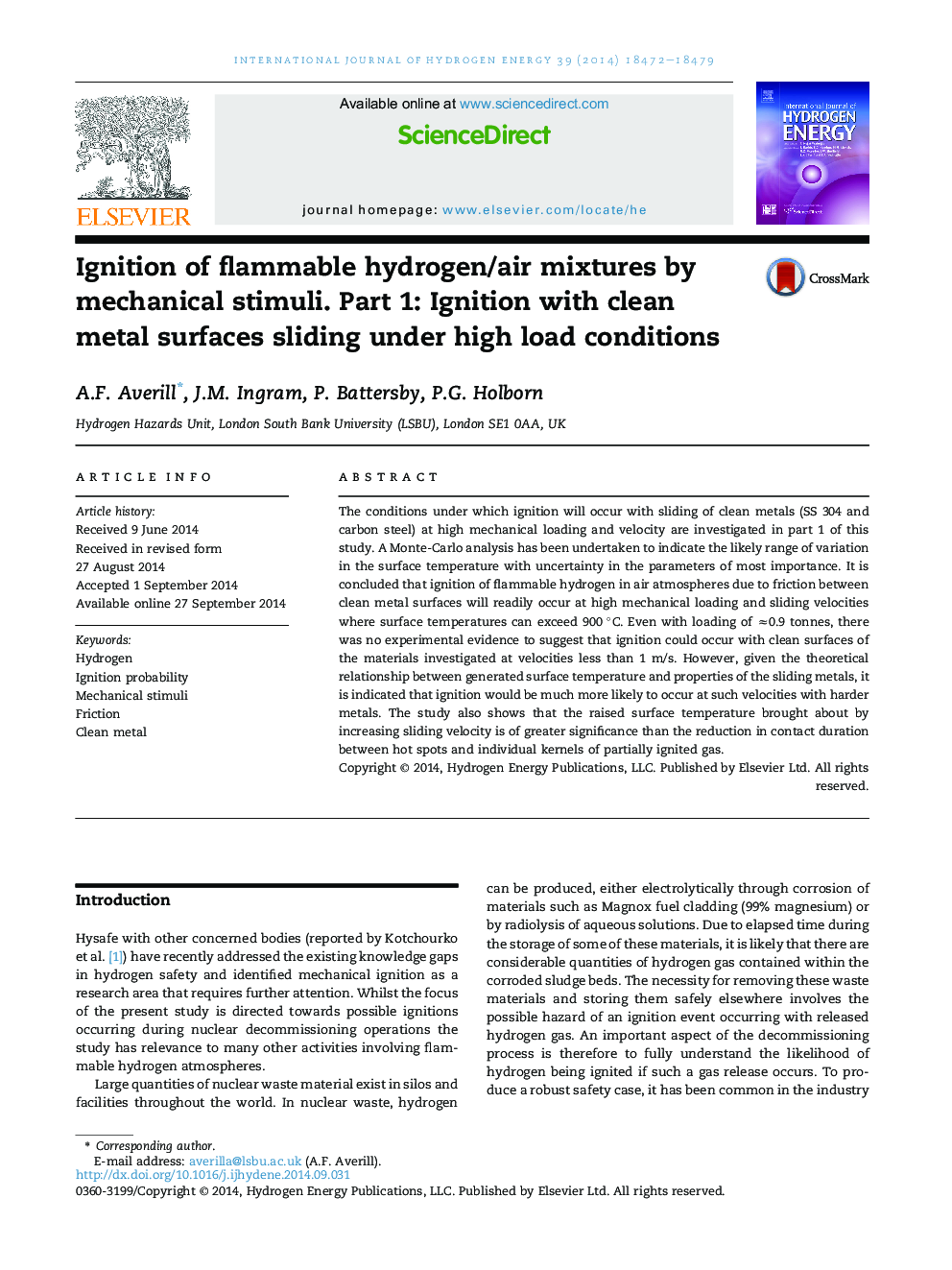| Article ID | Journal | Published Year | Pages | File Type |
|---|---|---|---|---|
| 1280857 | International Journal of Hydrogen Energy | 2014 | 8 Pages |
•We test for ignition probability of H2/air with high mechanical loading.•Loading of <1 tonne and sliding between 1 and 2 m/s can result in ignition.•Ignition of H2/air by friction with clean metal can occur at >900 °C.•From surface temperature calculations we predict H2/air ignition.
The conditions under which ignition will occur with sliding of clean metals (SS 304 and carbon steel) at high mechanical loading and velocity are investigated in part 1 of this study. A Monte-Carlo analysis has been undertaken to indicate the likely range of variation in the surface temperature with uncertainty in the parameters of most importance. It is concluded that ignition of flammable hydrogen in air atmospheres due to friction between clean metal surfaces will readily occur at high mechanical loading and sliding velocities where surface temperatures can exceed 900 °C. Even with loading of ≈0.9 tonnes, there was no experimental evidence to suggest that ignition could occur with clean surfaces of the materials investigated at velocities less than 1 m/s. However, given the theoretical relationship between generated surface temperature and properties of the sliding metals, it is indicated that ignition would be much more likely to occur at such velocities with harder metals. The study also shows that the raised surface temperature brought about by increasing sliding velocity is of greater significance than the reduction in contact duration between hot spots and individual kernels of partially ignited gas.
